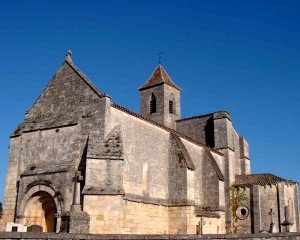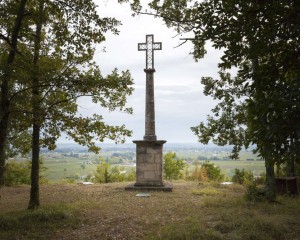Saint-Étienne-de-Lisse is a municipality in the Coteaux de Dordogne Canton and part of 8 towns of the Jurisdiction of Saint-Emilion. Its area is 710 ha, and is located at 5 km from Saint-Émilion. The town now has 249 inhabitants, called Stéphanois. Saint-Étienne-de-Lisse is twinned with the city of Framsden in UK.
The municipality Saint-Étienne-de-Lisse is named after the eponymous saint.
Traces of a fortified settlement dating from the early history (circa 700 to 600 BC), the first Iron Age, were found on the Niord plateau, it is the site of the present Chateau Fombrauge.
The town of Saint-Étienne-de-Lisse is anchored in history, especially with the Chateau de Pressac, where the treaty of the end of the Hundred Years War was signed at the end of the Battle of Castillon in 1453. This thus marked the end of 300 years of British presence in Aquitaine.
This small village has a rich heritage with a 12th century church. Above the village, located on the hillside, stands the Chateau de Pressac which dates back to the 14th century.
The town contains about 1.9 km of rivers, mainly including the Langrane Creek and the Barbanne Creek.
The winegrowers of the town produce wines of the controlled appellation AOC Saint-Emilion and Saint-Emilion Grand Cru.
More information about the wines of Saint-Emilion here.
The municipality has probably the most secretive point of view over the Jurisdiction: the location is called Tourans Cross, located in a small wood is accessible only on foot and you can admire the entire vineyard landscape. Thus there is a magnificent view across the valley of the Dordogne.
Several hiking trails pass through Saint-Étienne-de-Lisse, the Tourist Office of the Greater Saint-Emilion Area offers "Crossroads of the appellation" for a 2h30 hiking and a cycling tour "Route of the remarkable Architectures " for 19 km. Downloadable here.
The Saint-Etienne's Church was partily built on Gallo-Roman foundations in a shape of a Latin cross. During the 19th century it has undergone transformations. Before 1840, the church had a bell tower which stood on the crossroads of its transepts, but it was razed due to subsidence. In 1845, the bell is consolidated and put in the elevated stairwell.
In this church we can find six stalls senior clerics of the Jurisdiction, arranged in the choir, and from the Collegiate Church of Saint-Emilion.
The Chateau de Pressac stands above the town and the church and dominates the Dordogne valley. After the battle of Castillon, sealing the end of the Hundred Years War (1453), the surrender of England may have taken place at Chateau Pressac. The main building dates from the 17th century, but was rebuilt in neo-Gothic style in the 19th century. According to local traditions, the castle would have had the distinction of having 27 towers; ruins of many of them still can be seen. This castle with its fortified architecture, has been amended several times: the front door - the oldest part, opens on a wall with two towers and is topped with battlements before which were formerly dug moats. The current owners have now permit the restoration of the cellar.
1 rue Margagne
33330 SAINT-ÉTIENNE-DE-LISSE
05 57 40 18 45
mairie.st.etienne.de.lisse@wanadoo.fr
OPENING DAYS OF THE CITY HALL
Monday-Tuesday-Thursday-Friday: 9 am to 12pm / 1:30 pm to 5:30 pm

Grand Saint-Emilionnais Tourist Office
Le Doyenné - Place des Créneaux
33330 SAINT-EMILION





